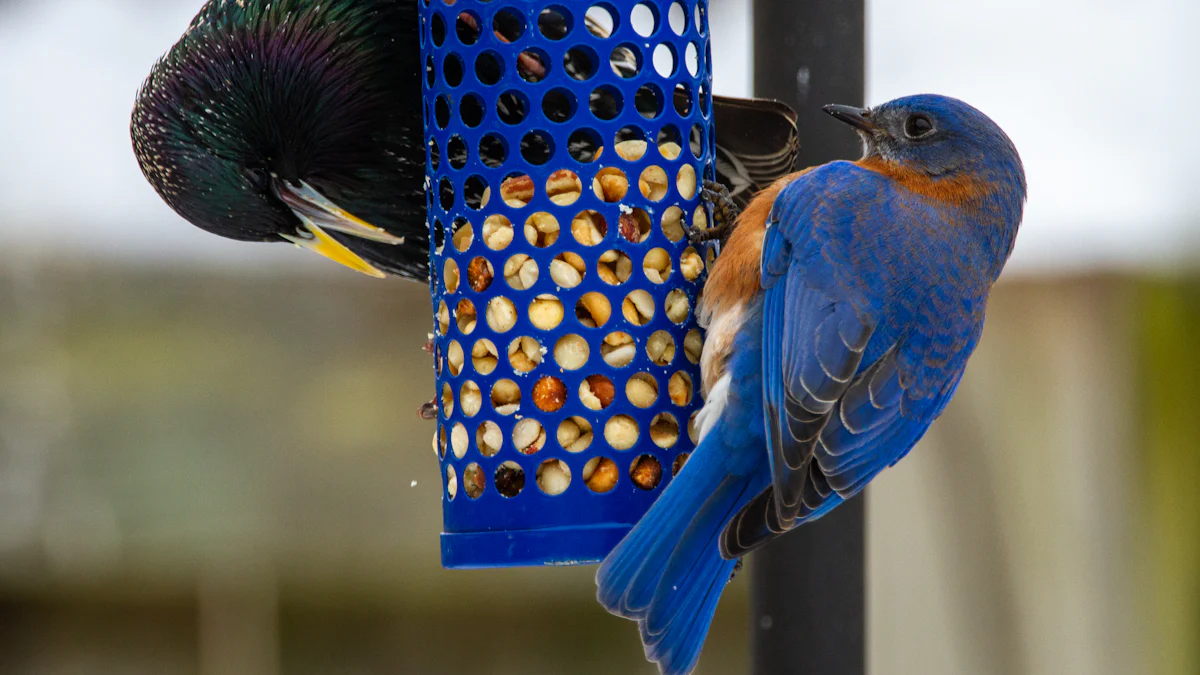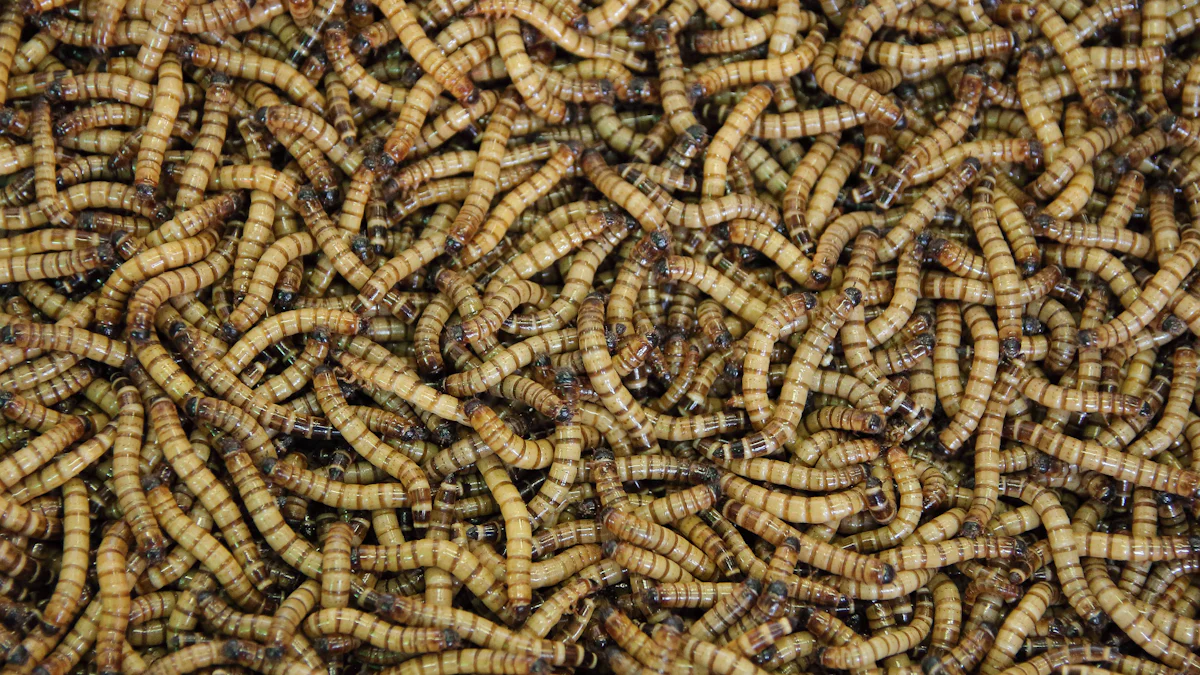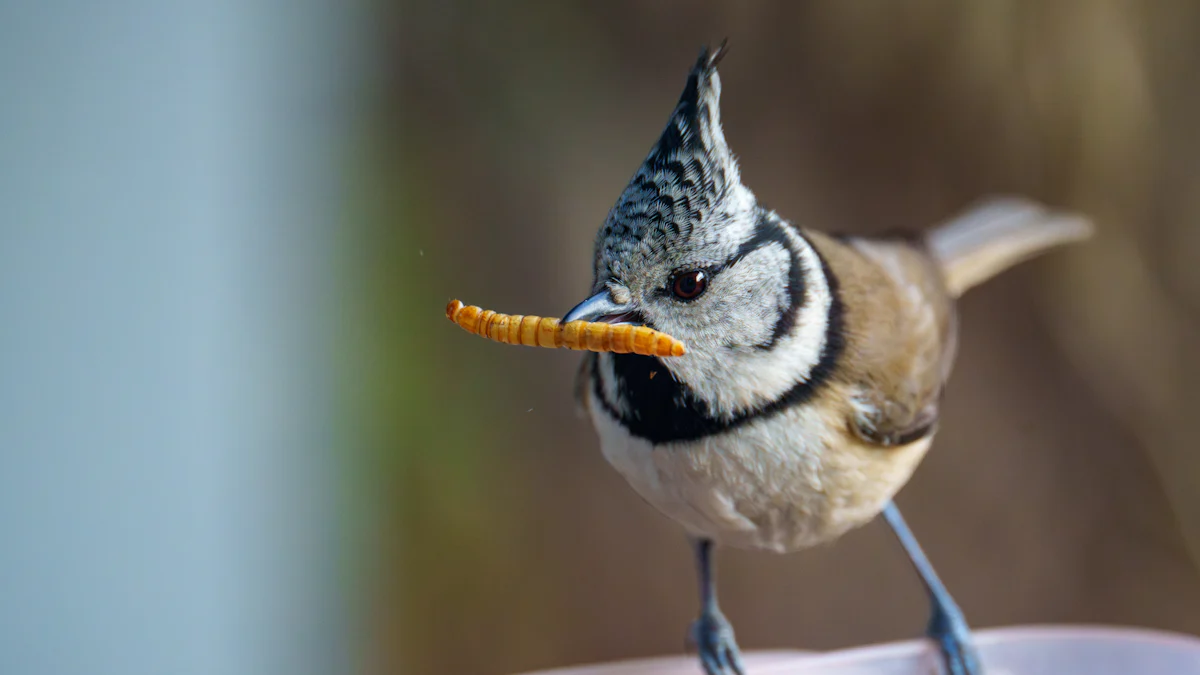
Have you ever wondered if mealworms are the right treat for the birds in your backyard? These little critters pack a punch with their high protein and fat content. While many birds love them, not all species benefit equally. Knowing how to use mealworms for bird feeding can make all the difference.
Key Takeaways
- Mealworms are a healthy snack for birds that eat insects. They give birds important protein and fat for energy and health.
- Giving too many mealworms can cause health problems. Use them as a treat, not the main food.
- Pick live or dried mealworms depending on your needs. Live ones bring more birds, but dried ones are easier to use.
Nutritional Benefits of Mealworms for Bird

High Protein and Fat Content
Mealworms are like a power snack for birds. They’re packed with protein and fat, which are essential for energy and muscle development. Protein helps birds grow strong feathers and maintain their overall health. Fat, on the other hand, gives them the energy they need to fly, forage, and stay active. If you’re feeding wild birds, mealworms can be a great way to give them a quick energy boost, especially during times when natural food sources are scarce.
Ideal for Insectivorous and Passerine Birds
Not all birds eat the same things, but insectivorous and passerine birds absolutely love mealworms. Birds like robins, bluebirds, and wrens naturally hunt for insects in the wild, so mealworms fit right into their diet. If you’ve ever watched these birds dart around your yard, you know how active they are. Mealworms provide the nutrients they need to keep up with their busy lifestyles. Plus, offering mealworms can attract these beautiful species to your backyard, giving you a chance to enjoy their presence up close.
Seasonal Benefits, Especially During Breeding and Winter
Mealworms for bird feeding become especially valuable during breeding and winter seasons. In spring, parent birds need extra protein to feed their chicks. Mealworms can help them meet this demand. During winter, when insects are harder to find, mealworms offer a reliable food source. By providing mealworms during these critical times, you’re helping birds survive and thrive when they need it most.
Risks and Limitations of Mealworms for Bird
Overfeeding and Nutritional Imbalance
Feeding birds mealworms might seem like a great idea, but overdoing it can cause problems. Mealworms are high in protein and fat, which is great in moderation. However, if birds eat too many, they might miss out on other essential nutrients from their natural diet. This imbalance can lead to health issues over time. Think of it like eating too much junk food—it’s tasty, but not always the healthiest choice. You should treat mealworms as a supplement, not the main course. Offering a variety of foods ensures birds get the balanced diet they need.
Unsuitability for Certain Bird Species
Not all birds benefit from mealworms. Some species, like seed-eating birds, don’t naturally consume insects. Birds such as finches and doves might not find mealworms appealing or digest them well. If you’re trying to attract specific birds to your yard, it’s important to know their dietary preferences. Researching the types of birds in your area can help you decide if mealworms are the right choice. This way, you can avoid wasting food and ensure you’re feeding the right species.
Risks of Improper Storage or Contamination
Mealworms, whether live or dried, need proper storage. Live mealworms can spoil quickly if kept in warm or damp conditions. Dried mealworms, on the other hand, can become contaminated with mold or bacteria if not stored in a cool, dry place. Contaminated mealworms can harm the birds you’re trying to help. Always check the quality of your mealworms before feeding them. A little care goes a long way in keeping your feathered friends safe and healthy.
Live vs. Dried Mealworms for Bird

Advantages of Live Mealworms
Live mealworms are like a gourmet treat for birds. They wiggle and move, which instantly grabs a bird’s attention. If you want to attract insect-eating birds like bluebirds or robins, live mealworms are your best bet. Their movement mimics the natural prey birds hunt in the wild, making them irresistible. Plus, live mealworms are packed with moisture, which helps keep birds hydrated, especially during hot weather. You can also use them to hand-feed birds, creating a unique bonding experience. However, they do require proper care. You’ll need to store them in a cool place and feed them regularly to keep them alive and fresh.
Benefits of Dried Mealworms
Dried mealworms are all about convenience. They don’t need refrigeration or special care, so you can store them for longer periods without worrying about spoilage. If you’re someone who likes to keep things simple, dried mealworms are a great option. They’re lightweight and easy to handle, making them perfect for sprinkling in feeders or mixing with other bird foods. While they lack the moisture content of live mealworms, they still provide the same high protein and fat that birds need. You can even rehydrate them by soaking them in water if you want to add some moisture back.
Choosing the Right Option for Your Birds
The choice between live and dried mealworms depends on your goals and the birds you want to attract. If you’re looking to draw in specific species or enjoy watching birds interact with their food, live mealworms are the way to go. On the other hand, if you prefer a hassle-free option that’s easy to store and serve, dried mealworms are ideal. Either way, mealworms for bird feeding can be a fantastic addition to your backyard setup. Just make sure to choose the option that works best for you and your feathered visitors.
Best Practices for Feeding Mealworms to Birds
How to Serve Mealworms
Serving mealworms to birds is easier than you might think. You can place them in a shallow dish, a platform feeder, or even scatter them on the ground. Birds like robins and bluebirds prefer open spaces, so a flat surface works best. If you’re using live mealworms, make sure the container has smooth sides to prevent them from escaping. For dried mealworms, you can mix them with seeds or suet to create a more balanced offering. Want to attract birds to a specific spot? Try placing the mealworms near shrubs or trees where birds feel safe.
Appropriate Quantities and Feeding Frequency
When it comes to feeding mealworms, less is more. A handful of mealworms a day is usually enough for a small group of birds. Overfeeding can lead to waste and might attract unwanted pests like rodents. Start with a small amount and adjust based on how quickly the birds eat them. It’s also a good idea to offer mealworms as a treat rather than a daily staple. This way, birds can still forage for their natural diet and maintain a healthy balance.
Seasonal Considerations for Feeding Mealworms
Mealworms for bird feeding are especially helpful during certain times of the year. In spring, they provide much-needed protein for nesting birds and their chicks. During winter, they offer a reliable food source when insects are scarce. However, in summer and fall, natural food is more abundant, so you might not need to offer mealworms as often. Pay attention to the birds in your area and adjust your feeding habits to match their seasonal needs.
Mealworms for bird feeding can be a fantastic way to support your feathered visitors. They’re packed with nutrients and attract a variety of species. However, not all birds benefit from them. By understanding their nutritional value, potential risks, and proper feeding methods, you can ensure a healthy and enjoyable experience for the birds in your care.
FAQ
Can mealworms attract unwanted pests to my yard?
Yes, overfeeding mealworms can attract pests like rodents or ants. To avoid this, offer small amounts and clean up uneaten mealworms promptly.
Tip: Use a feeder with smooth sides to prevent pests from accessing mealworms.
How do I store live mealworms properly?
Keep live mealworms in a cool, dry place, like a refrigerator. Use a ventilated container with bran or oats as bedding to keep them fresh and healthy.
Are mealworms safe for baby birds?
Yes, mealworms are safe for baby birds when fed in moderation. They provide essential protein for growth, especially during the breeding season when parents need extra nutrients.
Note: Avoid feeding only mealworms. A varied diet ensures balanced nutrition for baby birds.


